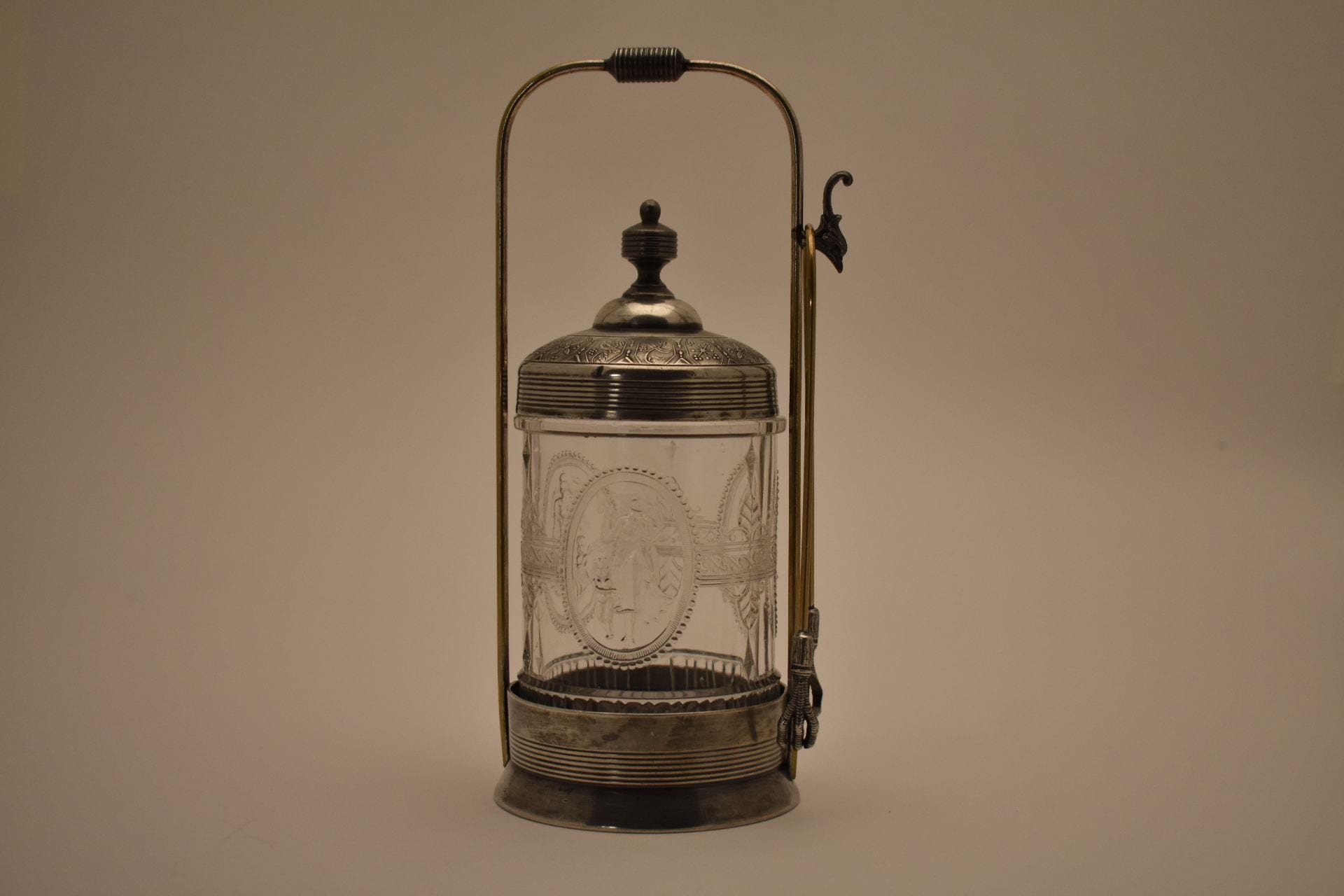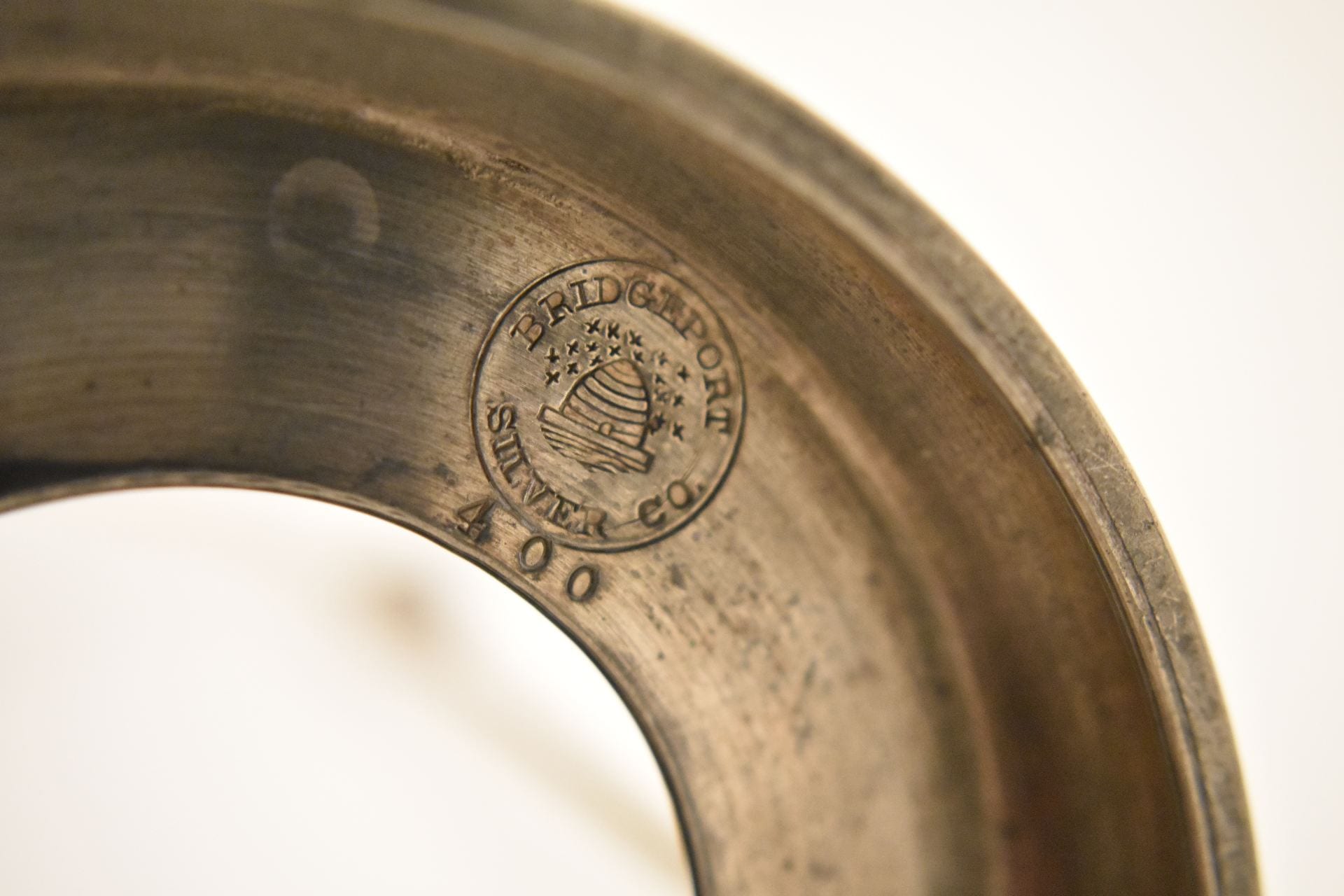Fermentation Frenzy
By Katharine Fitzgerald, WPAMC Class of 2019
Every September, the second-year fellows participate in the Montgomery Connoisseurship Competition. For $75 or less, we are tasked with finding and purchasing an object that intrigues us in some way. We present our research into the object itself, our work to find an institution that would consider it for donation, and any contact we have with that institution about the hypothetical donation. What follows is a summary of what I found out about my Montgomery object.
***
After going to countless antiques stores, estate sales, and auction previews between Delaware and southern Maine, I was happy to find the Inslee Brothers right down the road here in Chadds Ford, Pennsylvania. I pored through their drawers and shelves of silver serving utensils, medals, charms, and even glassware before Deke, one of the owners, produced this intriguing little object from within a locked cupboard.

My chosen Montgomery object: the pickle castor from the Inslee Brothers’ shop in Chadds Ford. All object images courtesy of Elizabeth Humphrey.
For those of you who know my love of pickles, you may be surprised that I had not heard of a pickle castor before, but it’s likely no shock that I had decided to purchase it within a few minutes.
Pickle castors (or pickle stands) became popular in the late 19th century, alongside numerous specialized utensils and serving dishes on the Victorian table. Castors like this one were typically used to present bread-and-butter-style pickled cucumbers, and I found countless recipes for them published between 1880 and 1925. While not my personal favorite, this type of sweet pickled cucumber was a highly fashionable snack and side dish for formal luncheons or simple suppers. Its metal stand, lid, and tongs are silver- and gold-plated, and the pressed glass jar fits almost perfectly into the base. Stamped on the bottom is the manufacturer’s name and symbol—a good place to get started with my research.

The underside of the stand has the Bridgeport Silver Company’s stamp and “400”—likely the grade of silver used for the plating process.
The Connecticut silvering industry was a logical place to begin. I found that silver-plated objects were common on American dinner tables by the 1860s and ‘70s, and Connecticut was home to more than its share of silvering companies. Bridgeport Silver was bought twice after it was formed in about 1880, absorbed into the International Silver Co. by about 1890. The mark on this castor—an active beehive surrounded by the company’s name—seems to have been the earliest mark used at the Bridgeport factory, confirming this early 1880s date range.
Winterthur Library’s trade catalog collection showed me just how popular these castors were between 1880 and 1925. Nearly every silver, silver-plating, and even glassware company offered a variety of castors for their customers. By the 1880s, these dining accoutrements were almost always silver-plated—not sterling silver—and the color, thickness, and decoration of the glass jar was just as important as the metal these companies were manufacturing. These materials were chosen deliberately for pickle castors: glass is nonreactive, perfect for preserved foods, and using a press mold allowed for a less expensive but still decorative object. Silver and gold-plating were easier and cheaper to manufacture than solid gold or silver, and also were more affordable to a wider clientele.

Page from “The Standard Silverware Salesroom Catalog,” c. 1892, showing just a few of the pickle castors they offered that year. Image courtesy of the Winterthur Library.
This pickle castor may not be a unique object, but it is emblematic of a foodway that lives on today. Whether we set the table for dinner or eat out of takeout containers, the utensils we use and vessels from which we eat are stamped, labeled, and pressed with designs meant to encourage us to go back for more. How many times have you taken a pickle out of the jar in the fridge for a quick snack? What does it mean to eat something straight out of its container versus moving it to a plate or other vessel for consumption? When there is something that compels us to “present” our food it reveals much about our individual preferences and our culture.
Food for thought!


Leave a Reply